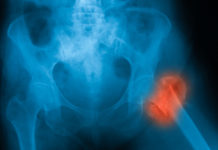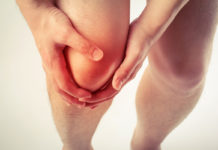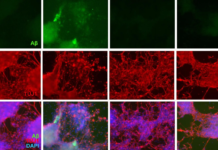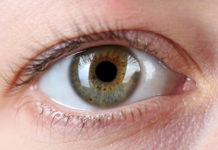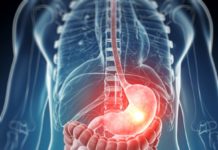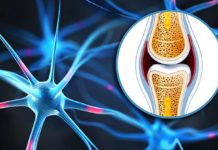Discovery Of Epigenetic Links In Cell-Fate Decisions Of Adult Stem Cells...
The ability to control whether certain stem cells ultimately become bone cells holds great promise for regenerative medicine and potential therapies aimed at treating metabolic bone diseases.
Increasing Daily Calcium Will Not Reduce the Risk Of Fractures In...
While moderate amounts of calcium (around 700 mg a day) are vital for maintaining healthy bones, there is no need to start increasing calcium intake in order to reduce the risk of fractures or osteoporosis in later life, finds a paper published on the British Medical Journal website on May 24.
Women With Osteoporosis Suffer More If They Have Previously Broken a...
Osteoporosis is more common in women who have fractured bones when they were younger -- and they experience a similar loss in health-related quality of life as those with arthritis, lung disease, diabetes and other chronic diseases.
Daily Vibration May Help Aging Bones Stay Healthy
A daily dose of whole body vibration may help reduce the usual bone density loss that occurs with age, Medical College of Georgia researchers report. Twelve weeks of daily, 30-minute sessions in 18-month old male mice -- which equate to 55- to 65-year-old humans -- appear to forestall the expected annual loss that can result in fractures, disability and death.
For Osteoporosis Patients, Exercise Pill One Step Closer To Reality
For osteoporosis patients unable to exercise, help may be on the way. That's because scientists have discovered precisely how mechanical stress, such as exercise, promotes new bone growth. This opens the door to entirely new therapies that can trick bones into thinking they are getting a workout.
Men Told To Watch Their Step: Consequences Of Failing To Treat...
Leading study author, Dr Jackie Center says: "While women are initially twice as likely as men to have a fracture, once the first break occurs, the risk of a second substantially increases and the protective effects of being male disappear altogether."
New Genetic Regions Linked To Bone-Weakening Disease And Fractures
Thirty-two previously unidentified genetic regions associated with osteoporosis and fracture have been identified by a large, worldwide consortium of researchers, including Stanford Prevention Research Center chief John Ioannidis, MD, DSc. Variations in the DNA sequences in these regions confer either risk or protection from the bone-weakening disease. Many, but not all, of the regions encode proteins involved in pathways known to involve bone health.
Some Bisphosphonates Users Unfamiliar With Drug’s Possible Side Effects On Oral...
People undergoing bisphosphonate therapy to prevent or treat osteoporosis (a thinning of the bones) may be unfamiliar with the drug and possible adverse side effects on oral health, according to a study in the May issue of the Journal of the American Dental Association (JADA).
Common Osteoporosis Drugs Are Associated With A Decrease In Risk Of...
Women who take some types of bone-building drugs used to prevent and treat osteoporosis may be at lower risk of breast cancer, according to a study by U.S. researchers published in the British Journal of Cancer.
Exercise Associated With Lower Rate Of Fractures In Elderly Women
Home-based exercises followed by voluntary home training seem to be associated with long-term effects on balance and gait (manner of walking), and may help protect high-risk, elderly women from hip fractures, according to a report in the September 27 issue of Archives of Internal Medicine, one of the JAMA/Archives journals.
Gradual Bone Reduction Seen In Some Birth Control Pill Users
Birth control pills may reduce a woman's bone density, according to a study published online July 13 in The Journal of Clinical Endocrinology and Metabolism by Group Health Research Institute (GHRI) scientists. Impacts on bone were small, depended on the woman's age and the pill's hormone dose, and did not appear until about two years of use. The study size and design allowed the researchers to focus on 14- to 18-year-old teenagers, and to look at how bone density might change when a woman stops using the pill.
Risk Of Falling Is Overlooked As The Major Cause Of Fractures...
An elderly person's risk of falling is too often overlooked when trying to prevent them from getting serious fractures, for instance of the hip or wrist, according to an article published in the British Medical Journal.


